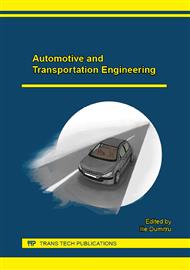p.135
p.141
p.146
p.150
p.156
p.160
p.169
p.175
p.183
The Comparison between Viscous Fluid Dampers and Romanian Friction Dampers Performance in Base Isolation System of Buildings
Abstract:
This paper analyse the performance of two types of devices used for protecting the building against collaps during earthquakes. These devices are used in paralell with the base isolation system of the building and are intended to increase the damping phenomenon in order to dissipate the quakes energy received by the resistance structure of the buildings. The purpose of this computational study is to determine if these friction dampers, which are four times less expensive than the classical viscous fluid dampers, can replace the classical choice in order to obtain a less expensive protection. The results obtained at the final of this study are encouraging because the damping performances of romanian telescopic devices are similar with the performances of classical viscous fluid devices in base isolation system.
Info:
Periodical:
Pages:
156-159
Citation:
Online since:
January 2016
Authors:
Price:
Сopyright:
© 2016 Trans Tech Publications Ltd. All Rights Reserved
Share:
Citation:


